True Inclusion Starts with Seeing Students for Who They Are
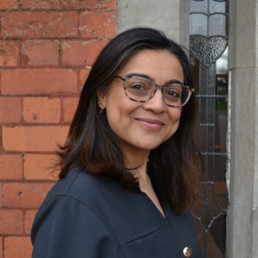
Written by Purvi Gandhi
Purvi Gandhi, MA MBA FCCT CPsychol is a psychologist, educator, and advocate for student wellbeing, leadership, and equity in education. With a career spanning clinical psychology, secondary and post-secondary education, and educational leadership, she bridges mental health and education through evidence-informed practice. She is the author of A Little Guide for Teachers: Student Mental Health, a practical resource for educators.
Imagine stepping into a new environment where your name is mispronounced or shortened to something more “convenient.” It’s a minor inconvenience, perhaps, but one that over time chips away at your sense of belonging. Now imagine this happening every day, in a place where you are supposed to grow, learn, and thrive.
For many students, particularly those from ethnic minority backgrounds, this is not hypothetical—it is their daily reality. And yet, within the walls of our classrooms, the power of a name is often underestimated. Names are not just labels; they carry history, identity, and cultural heritage. To overlook them is to overlook the student. To get them right is to affirm who they are.
Beyond Good Intentions: Why Inclusion Must Be Active
In a recent workshop with early career teachers, we explored what it really means to create inclusive classrooms—beyond policies, beyond slogans, and into the lived experiences of students. The session began with a simple but revealing exercise: storytelling.
One African tale set the tone. A great flood sweeps through the land, and every animal finds a way to escape—even the mighty crocodile. High up in the trees, the monkeys spot a fish struggling in the floodwaters. Moved by compassion, they “rescue” it, placing it safely on a branch. Of course, the fish begins to suffocate.
The lesson is clear: good intentions do not equate to good outcomes. In education, a one-size-fits-all approach can be just as ineffective as the monkeys’ well-meaning mistake. Every student has unique needs, shaped by culture, background, and identity. The question is, are we paying attention?
Consider this: A teacher, in an off-the-cuff remark during a classroom discussion on relationships, casually states that arranged marriages are “backward” or “unfair.” It’s not intended to harm, just a spontaneous reaction based on personal beliefs. But what if a student from a culture where arranged marriages are the norm is sitting there, quietly absorbing that statement?
Perhaps this student has spent years trying to navigate the space between two worlds—balancing the values of their family with the expectations of the society they are growing up in. Now, in a single moment, they are made to feel that their culture is lesser. They may go home carrying this conflict, questioning their parents, their upbringing, and where they truly belong. Suddenly, they feel like an outsider in both places—neither fully at home at school nor at home with their family.
This is the impact of uninformed assumptions. Educators do not just teach subjects; they shape perspectives. A thoughtless comment can widen the gap between a young person and their identity, making them feel alienated rather than empowered.
To be truly inclusive, we must move beyond our own perceptions and seek to understand the lived experiences of others. We must create spaces where students don’t feel forced to choose between their heritage and their education, but rather see their identities reflected and respected within the school environment.
Because, just like the fish in the flood, what a student truly needs may not be what we assume is best for them. Listening, learning, and adapting is the key to meaningful inclusion.
Rethinking What It Means to ‘See’ Our Students
An alternative version of the tale drove the point home. In this retelling, the animals hold a competition to see who can see the farthest. The eagle soars and surveys the horizon, the giraffe gazes across the savanna, and the monkey takes in the view from the treetops. When it’s the fish’s turn, it can only see the immediate waters around it. The other animals laugh—until the fish explains that while they focus on the distance, it detects subtle currents, hidden dangers, and movements they cannot perceive.
Here lies a second lesson: students should not be judged against a singular definition of success. The education system, often fixated on rigid measures of ability, risks missing the unique strengths that lie beneath the surface. A student who struggles with traditional assessments may have an extraordinary ability to lead, innovate, or empathize—if only we are willing to recognize it.
The Power of a Name
Of all the discussions that day, one stood out: the impact of names. Inspired by Bennie Kara’s work on diversity in education, we asked teachers to explore their own names—their meanings, origins, and the personal stories behind them. What followed was a conversation about identity, belonging, and the small but significant ways that schools can either affirm or erode a student’s sense of self.
One student shared how her intended name was “Yah Yah,” meaning “gift from God,” but her parents, wanting to make life easier in an English-speaking country, renamed her Ysabella. She was seated alongside another student, Anjali, whose name means “gift to God.” Here were two students, from different cultures, bound by the same idea: they were gifts.
Imagine the impact of recognising that connection—not as a coincidence, but as an intentional act of inclusion. When we take the time to pronounce a name correctly, to understand its meaning, or even to ask about it, we are sending a powerful message: You belong here.
Moving From Awareness to Action
It is easy to talk about inclusion in broad terms. It is harder—but far more necessary—to embed it into daily teaching practice. The workshop concluded with three core reflections for teachers:
- Cultural Competence: How much do I really know about my students’ backgrounds? Where are the gaps? What steps can I take to learn more?
- Equity Over Equality: Do I recognize the unique needs of my students? How can I tailor my support to meet them where they are?
- Celebrating Identity: What cultural capital do my students bring into the classroom? How can I acknowledge and honour it?
Education is not just about imparting knowledge; it is about shaping identities. A student who feels unseen will struggle to engage. A student who feels valued will thrive.
The work of inclusion is not grandiose. It does not require a total overhaul of curriculum or sweeping policy changes. It starts with the smallest of acts: a correctly pronounced name, a thoughtful seating plan, a recognition that success looks different for everyone.
And perhaps, that is the greatest takeaway of all—belonging is built in the details.
References:
Fernando-Smith,L and Aow, A, (2024), ‘Letting go of imposter syndrome: writing herstory.’ In Disruptive Women – A Guide for Equitable Action in Education, Corwin
Kara, B., 2020. A little guide for teachers: Diversity in schools, Corwin
Pierson, R., 2013. Every kid needs a champion. TED Talks Education.
You can’t just teach a child out of poverty
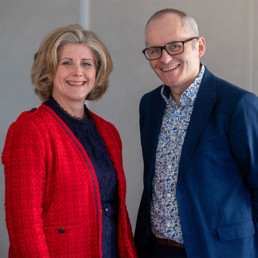
Written by Sean Harris and Katrina Morley
Sean Harris – Co-author and Director of PLACE (People, Learning and Community Engagement) at Tees Valley Education. Katrina Morley OBE – Co-author and CEO of Tees Valley Education.
One of the most urgent and complex issues schools face today is the deep-rooted impact of poverty on the communities they serve. For school leaders and educators, this isn’t just about data, it’s about real lives, and the daily reality of hardship affecting pupils and families.
The challenges of poverty extend well beyond the school gates. It influences everything from children’s learning experiences to their long-term life chances, often reinforcing cycles of inequality that are difficult to break.
But poverty and inequality do not have to be an inevitable part of the story we write in schools and communities.
Practice to Page
In Tackling Poverty and Disadvantage in Schools, we set out to create more than just another education book.
This is a collaborative guide, designed to support busy educators and stretched school leaders with practical tools and real-world strategies to help dismantle the complexity of inequality.
It reflects the voices of those working at the frontline, educators, leaders, and organisations who know what it means to walk within communities facing adversity.
This book is built on shared experience. It’s by the sector, for the sector, and with the sector.
It also challenges the rhetoric that the only or best way to tackle inequality is through excellent teaching alone.
‘While research consistently highlights the importance of high-quality teaching, policy and practice too often lean on this narrative to imply that a great teacher alone can overcome deep-rooted inequality. In reality, the schools making meaningful strides in addressing disadvantage recognise that delivering education in their communities requires a far more nuanced and holistic approach.’
Sean Harris: co-author
Director of PLACE (People, Learning and Community Engagement) at Tees Valley Education
No egos, no silos
What makes this project distinct is its collective approach. We brought together perspectives from across the UK and beyond: educators, researchers, policymakers, and thought leaders who are tackling educational inequality every day.
Each contributor brings school-based insight, evidence-informed thinking, and grounded practices. From making classrooms more inclusive and curriculum more equitable, to fostering a culture of social justice across whole-school systems, the book is packed with adaptable and proven strategies.
‘Schools alone are not the solution to tackling inequality, but they are an essential part of it. That’s why it was vital for this book to be shaped by the expertise and lived experiences of schools and organisations that are actively driving change. True progress comes through collaboration. Only by working together can we begin to understand and address the complex, enduring nature of disadvantage.’
Katrina Morley OBE
Co-author and CEO of Tees Valley Education
And let us be clear: while schools play a vital role in addressing disadvantage, they cannot do it alone. Education is only one component part of system change.
Optimism included
This book arrives at a critical moment.
Schools are contending with the lingering effects of COVID-19, the rising cost of living, and increasing poverty-related barriers to learning. We wanted to offer something constructive: a resource that doesn’t just highlight the issues, but offers a roadmap for making a difference.
The book has been written with busy leaders and educators in mind. We wanted to help educators foster environments where every child feels seen, supported, and capable of thriving, no matter their background.
Using the book
We know there’s no one-size-fits-all solution. Schools are diverse, complex places where staff face many competing demands. That’s why we designed this book to be both accessible and flexible.
The content is organised around three core themes:
- Whole-school approaches (e.g. leadership and school culture)
- Classroom practices (e.g. including teaching methods and curriculum design)
- Wider interventions (e.g. mentoring, family support, and industry partnerships)
These strands provide different entry points, depending on where your school is in its journey. Whether you’re a new or established teacher looking for classroom ideas or a senior leader seeking systemic change, we hope this book meets you where you are.
Each chapter follows a consistent and easy-to-navigate format:
Research Recap: We summarise key studies and evidence that help contextualise the topic. It’s rigorous but digestible, with signposts for further reading if you want to go deeper.
Case Studies: Real examples from schools and organisations that have put theory into action. These are not silver-bullets but grounded insights from practitioners who’ve tested and refined their approaches.
Reflection: Tools and activities for applying the ideas in your own setting. These can be used individually or with your team. Plus, we’ve included access to an online hub with templates, planning guides, and reflection exercises to keep the work going beyond the page.
Each chapter also ends with concise takeaway points—perfect for sharing over a quick chat with a colleague (caffeine optional, but encouraged!).
Professional generosity
What truly sets this project apart is the generosity and dedication of our contributors. Everyone involved has donated their time and waived royalties. Profits from the book will go directly to supporting initiatives that benefit children and young people living in poverty, through our work with Tees Valley Education.
This spirit of collaboration and shared purpose is at the heart of everything we’ve created here.
We didn’t want to produce another title that simply restates how hard things are or overcomplicates the problem. Instead, we focused on creating a useful, empowering, and hopeful resource for professionals in education.
Importantly, we’ve also been careful to approach the topic with dignity and respect. Children and young people facing poverty are not “problems” to be fixed. The real challenge lies in the systems and structures that make life harder for them. It’s those systems we must work to change—and we believe schools can be powerful agents in that process.
We hope Tackling Poverty and Disadvantage in Schools contributes something meaningful to the ongoing conversation about equity and education. Our thanks go to every school, leader, and educator who continues to show up, innovate, and stand with their communities.
Leaders Engagement in Mothers’ Matters
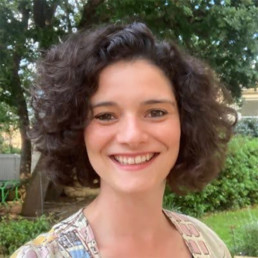
Written by Emma Sheppard
Emma founded The MTPT Project, the UK's charity for parent teachers, in 2016 when on maternity leave with her first child. She has 12 years experience as an English teacher, Lead Practitioner and ITT Lead, and now runs The MTPT Project full time.
At The MTPT Project, we take our commitment to inclusion seriously. As Founder, I love reviewing our data annually for our Diversity and Inclusion report, the way that this informs our strategies as a small charity and the impact this then goes on to have.
One of these strategies to come out of our 2023-24 report was to improve engagement tracking at events directed to leaders in our sector. We are curious to know whether our work is perceived – in broad terms – as workforce and retention or diversity and mothers.
It makes sense that our programmes aimed at staff who are parents attract an overwhelmingly female audience. Because of our national and sector parenting policies, mothers are still afforded more paid time on birthing maternity leave than fathers and non-birthing partners, and this is when gendered routines around parenting take root and influence the division of domestic and professional labour in the long term – particularly in heterosexual couples.
Our leadership work, however, is aimed at senior leaders and above. Statistically, these are positions where men are over-represented at both primary and secondary level. If our work is (correctly) seen as workforce and retention, then up to 60% of our audience at these events should be men.
At this mid-point in the year, then, how far do school leaders still consider the retention, progression and wellbeing of parent-teachers as a ‘mothers matter’?
We’ve tracked data over 15 events – most of which have been optional to attend – aimed at school and systems leaders, and this is what we’ve found:
- On average, just 17% of attendees at these events have been men
- On three occasions, there has not been a single male face in the room
- Three events have hit our starter target of 24% male representation (the proportion of men in the wider teacher workforce, not at leadership level) and these were events billed as retention, flexible working, or an obligatory meeting for local headteachers
We count a number of men within our professional network who show up regularly to champion the work that we do. They sign off funding, make introductions, speak up on behalf of our community, work on research and data projects, platform our work on social media and speak at our events.
But men are not showing up enough as audience members to learn about the daily, and systems-wide practice that can be implemented to support working mothers for the overall health of our workforce and – ultimately – the schools they are leading.
An acute example of this disconnect: 22% of the speakers at The MTPT Project’s Missing Mothers conference are fathers and leaders from our community, but – two weeks ahead of the event – not one of the 135 ticket holders are men.
When organisations are considered who is “best placed” to attend MTPT events, the data suggests that they are still sending leaders with first-hand experience of motherhood. Clearly, the view is that these mothers’ matters are best handled between mothers and by mothers.
Statistically, however, these mothers, sorting things out between themselves, are less likely to be in leadership positions than men. They are less likely to wield decision-making power and they are less able to role model effective allyship to other men.
If we really want to make a sustainable difference to the teacher retention crisis, our male leaders need to stop seeing mothers as a diversity group, and instead know that mothers are workforce.
To Belong Is Not Enough: Why We Must Move Towards Mattering
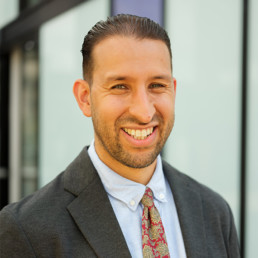
Written by Mohamed Abdallah
With almost two decades of experience, Mohamed started his journey in youth work and pupil referral units before spearheading groundbreaking inclusive practices and systems as a leader in an 'Outstanding' all-through mainstream school. Driven by a relentless commitment to positive change, Mohamed now dedicates his efforts to collaborating with school leaders across the nation as the Head of the Inclusive Leadership Course at The Difference.
“No one would care if I weren’t here.”
I can remember the words hitting me hard. As Designated Safeguarding Lead there were immediate red flags, but on a human level it broke my heart.
100% attendance, great progress, and never in trouble. On paper he belonged – but in reality he thought nobody cared.
Across the country, I hear the language of belonging increasingly referenced in discussions about student engagement, wellbeing, and success. And I welcome it. It’s a refreshing shift in our narrative about the student experience.
Still, something didn’t feel right. Then, it clicked.
It is not enough to simply belong; you should also matter.
My experience has shown me that a student can belong to a school community without ever feeling that their presence or contributions truly matter. A friend recently shared a US study with me that revealed a surprising finding: a sense of ‘belonging’ to a school community did not significantly affect academic performance. But instead there were other factors that determined success, such as participation and self regulated learning.
Think about it this way: You belong to a gym, but do the regulars know your name? You belong to a workplace, but do your ideas shape the way things are done? You belong to a school, but when you are absent, is there a noticeable void?
Mattering is more than belonging to a place or a community; it is about your significance.
One of the most prominent academic advocates for mattering is the US community psychologist Isaac Prilleltensky. He argues that developing a strong sense of mattering depends on two things: feeling you are valued, and feeling that you add value – whether that be within your workplace, your community, your family, or your friendship group. In the UK, my good friend Luke Billingham has been one of the most influential thinkers and writers on young people and mattering.
The Three Components of Mattering in Schools
After multiple voice notes back and forth, Luke and I sat down to discuss this matter (see what I did there!), and we asked:
If a student stopped coming to school tomorrow, would they feel like their absence was noticed?
Does every student have positive and affirming relationships with peers and at least one adult?
Are students actively shaping the school environment, or are they simply complying with expectations?
These questions helped us think more deeply about mattering. Of course, students should belong. But would we be satisfied as school leaders with 100% attendance, high attainment, and zero suspensions, yet students still told us, “No one would care if I weren’t here”?
They should feel they matter.
Reflecting on our experiences in different schools, Luke and I identified some key factors which we think enable students to develop mattering; Voice, Relationships, and Participation.
- Voice: Too often, schools claim to prioritise student voice while keeping real decision-making at the leadership level. But voice is not just about being heard. Schools must embed student experience and perspectives into decision-making, not just through surveys, but by creating opportunities for meaningful dialogue and change. Even when student perspectives challenge us, they offer uncomfortable truths we must engage with. When students see their input shape school culture, they matter.
- Relationships: A student might belong to a school, but do they have relationships that affirm their worth? Schools could cultivate opportunities for positive peer relationships to create strong social bonds, and to ensure every student has at least one trusted adult. Relationships built on trust and recognition, and environments where students feel valued and connected.
- Participation: Mattering isn’t just about feeling noticed, it’s about feeling needed. Students need opportunities to contribute meaningfully to their school communities. This goes beyond enrichment clubs; it means ensuring that students are actively shaping their environments. Whether through student-led campaigns, or engaging with the local community, authentic participation allows students to see their impact.
Why Mattering Matters for Inclusion
I worry that belonging is being used as a catch-all solution for inclusion, or dare I say it, a form of soft inclusion. For many students from marginalised backgrounds, belonging can feel conditional. They may be required to turn up, but do they feel like their presence and identity are essential? Do they see themselves reflected in the curriculum? Are their voices shaping school systems? Are their experiences acknowledged and valued?
Mattering addresses these questions by ensuring that students are not just included, but recognised as integral members of their schools. For students from underrepresented backgrounds, the feeling of mattering can be a protective factor against marginalisation and disengagement.
If we stop at belonging, we risk creating schools where students exist but don’t thrive, they comply but are disengaged, are included but unseen. The real challenge for schools isn’t just inclusion. It’s significance. Instead of asking, ‘Do our students belong?’ ask, ‘Do they know they matter?’
World Book Day 2025

Written by Robert Davies
Rob Davies is Associate Assistant Headteacher at Calderstones School in Liverpool. This role involves leading on anti-racism in education, sharing practical strategies, reflections, and initiatives to create a more inclusive, representative, and equitable school. He shares insights on decolonising the curriculum, diversifying reading materials, and fostering anti-racist practices in schools.
Another year, another World Book Day—same costumes, same characters. Harry and Hermione? Check. Little Red Riding Hood? Of course. The Gruffalo? Naturally. And let’s not forget Mrs. Trunchbull, stomping through the halls. Sound familiar? Thought so.
But here’s the thing—World Book Day can be so much more. It’s time to move beyond the usual suspects and reimagine it through a truly diverse lens. Let’s make it an event where every student sees themselves in the stories we celebrate.
Every year, World Book Day celebrates the magic of stories. But whose stories are we telling? Who do they inspire? When books and characters overwhelmingly reflect white, middle-class experiences, whose voices are missing? Are we selecting a diverse range of books that offer all children equitable opportunities to see themselves?
If not, isn’t it just Book Day?
At its core, World Book Day aims to “promote reading for pleasure, offering every child and young person the opportunity to have a book of their own.” But if we fail to approach it through an anti-racist lens, are we truly serving all students?
The Representation Gap in Children’s Books
In the UK, 33.5% of school-aged children come from ethnic minority backgrounds. Yet, between 2017 and 2019, only 7% of children’s books featured characters from these cultures—and just 5% had a Black, Asian, or Minority Ethnic main character.
Research shows that when children see themselves in books, it shapes their sense of identity and possibility.
Despite limited representation, excellent books exist that help students feel seen, foster belonging, and cultivate a love of reading. But do schools actively seek them out?
The issue goes beyond just introducing diverse books. What if teachers haven’t read them, or don’t understand their significance?
Whose culture has capital?
With a predominantly white teaching workforce (Runnymede Trust, 2020), how often is World Book Day shaped through an anti-racist lens? One of the biggest motivators for reading is emotion—how books make us feel (Dungworth et al., 2004). Naturally, educators promote books that resonated with them in childhood, shaped by their own experiences.
If most books being championed reflect the same narrow cultural perspectives, what message does that send? Who do these books inspire—and who gets left out?
Research further supports this. More children from ethnic minority backgrounds than white backgrounds say they don’t see themselves in what they read (40% vs. 30.5%), with Black students feeling this most acutely.
Making It a World Book Day
If World Book Day is to truly reflect all students, schools must take active steps to make it more inclusive. That’s exactly what we did at Calderstones School this year.
As one of Liverpool’s largest secondary comprehensive schools, diversity is our strength. But we recognised that World Book Day needed to reflect that diversity, ensuring all students felt represented and engaged.
So, we embraced the ‘world’ in World Book Day. We focused on books and authors from a variety of cultures and languages, fostering conversations about students’ mother tongues and cultural backgrounds.
We collaborated with Greenbank Primary School and Leeds Beckett University to involve primary school students and Global Ambassadors. Together, they read books from their home countries in their native languages—including Arabic, Basque, Farsi, French, Greek, Mandarin, Polish, Russian, Urdu, and more.
By showcasing this linguistic and cultural diversity, we highlighted the vital importance of representation in education. The readings were recorded, edited, and shared on the school’s social media. The response? Overwhelmingly positive. For many in our community, this was the first time their language and heritage were visibly celebrated in school.
How to Rethink World Book Day in Your School
If we are serious about delivering a truly inclusive World Book Day, here’s lets start with the following: 1. Move Beyond the Same Old Costumes
Rather than dressing up as characters from GCSE texts, consider why these books dominate the curriculum. Less than 1% of GCSE students study a book by a writer of colour—so why reproduce that marginalisation on World Book Day?
- Conduct a Student Voice
Ask students:
- What books would you love to explore?
- Do you see your culture and heritage reflected in the school library?
- What stories are missing from the shelves?
- Use these insights to shape book selections and discussions.
- Explore Translated Literature
Many beloved English books originated in other languages—Pinocchio was originally Italian. What other global stories could students discover? World Book Day can be an opportunity to highlight the rich traditions of storytelling from around the world.
Final Thought: A Call to Action
By embracing the ‘world’ in World Book Day, we made it more meaningful for our students. This is a step in the right direction—but it can’t stop here. Schools must challenge traditional reading lists, elevate diverse voices, and ensure that every child sees themselves in the stories they read.
We can’t diversify the teaching workforce overnight, but we can broaden our thinking. We must ensure that we view events like World Book Day through an anti-racist lens.
Because if World Book Day doesn’t include all stories, is it really World Book Day at all?
From Lettuce to Leadership: The Recipe for Real DEIB in Schools
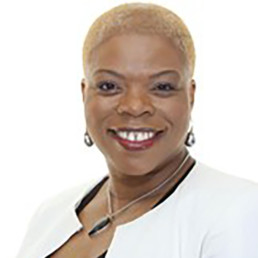
Written by Sharon Warmington
Sharon is a diversity of race advocate and trainer, and CEO of the National Black Governors Network. She is an experienced academy trustee and school governor, corporate governance specialist. As an international Governance Practitioner and local school Governor, Sharon Warmington is also a public speaker, facilitator and a strategic leader, having worked nationally and internationally on projects in the private, public and third sector.
The room fell silent. A lone voice cut through the air like a scalpel.
“If we always do what we’ve always done, we’ll always get what we’ve always got.”
A murmur of agreement rippled across the table, but the truth hung heavy. Governance in education wasn’t evolving fast enough. The diversity deficit on school boards was glaring, and yet the solution was tantalisingly within reach.
Diversity, Equity, Inclusion, and Belonging (DEIB). A well-rehearsed mantra, a neatly arranged acronym, but in practice? Too often, it was all lettuce—bland, predictable, offering little more than a base layer. And just like a dull, uninspired salad, governance without true DEIB lacked texture, colour, and depth.
The First Ingredient: Diversity
Imagine stepping into a kitchen with only one ingredient. The outcome is predictable—uninspiring, repetitive, and ultimately ineffective. The same is true for governance.
Without representation across different racial, ethnic, gender, and socioeconomic groups, leadership decisions are made in an echo chamber. Diversity isn’t a ‘nice-to-have’; it’s the foundation upon which every other principle of DEIB is built. Without it, equity and inclusion remain unattainable.
The Dressing: Equity
Equity isn’t about throwing different ingredients into the mix and hoping for the best. It’s about recognising that some have been denied access to the kitchen entirely.
A governing board dominated by a single demographic can never truly understand the systemic barriers faced by underrepresented communities. Equity means creating real opportunities, ensuring those at the table have the tools, training, and access they need to contribute meaningfully.
It’s the dressing that brings balance—without it, even the freshest ingredients fail to shine.
The Crunch: Inclusion
Diversity and equity alone are not enough. Inclusion is the crunch, the bite, the assurance that every voice at the table is not just heard but valued.
A tokenistic approach—where individuals from diverse backgrounds are present but sidelined—rings hollow. Effective governance ensures all voices are not just present but shape the conversation. That means active listening, real participation, and a culture where speaking up is met with action, not silence.
The Secret Ingredient: Belonging
The final element, the one that brings it all together, is belonging.
A salad with great ingredients but no harmony is still a mess. The same applies to governance. If board members feel like outsiders—constantly having to prove their worth, explain their existence, or justify their perspectives—then DEIB has failed.
Belonging is the ultimate goal. It’s the point where leaders no longer ‘accommodate’ difference but celebrate it. It’s where representation is no longer an initiative but an expectation.
The Governance Gap: A Recipe for Change
The Department for Education (DfE) mandates that schools and trusts prioritise diversity in governance. The Public Sector Equality Duty requires active promotion of equality and inclusion. And yet, how many governing boards truly reflect the communities they serve?
The data tells its own story. Governing boards remain overwhelmingly white, predominantly male, and heavily weighted towards those over 50. Meanwhile, young voices, Black and Asian perspectives, and disabled representation remain painfully absent.
The solution? A new approach.
Turning Theory into Action
If schools are serious about DEIB, they must move beyond rhetoric. This means:
- Mapping the gaps: Who is missing from your governing board?
- Expanding the search: Looking beyond the usual networks—engaging with Black professional groups, student unions, disability organisations.
- Creating real pathways: Making governance accessible for those who may never have considered it.
DEIB isn’t about optics—it’s about outcomes. Schools with diverse governance bodies are better equipped to navigate the complexities of modern education. They make stronger decisions, build more inclusive policies, and ultimately create better environments for students.
The Call to Action
So, the question isn’t whether DEIB is important—it’s whether we’re brave enough to do the work.
Are we prepared to step beyond our comfort zones? To challenge long-standing norms? To build governing boards that truly represent the schools they serve?
The choice is ours. We can keep serving up plain lettuce, or we can create something extraordinary.
I Am Not Afraid
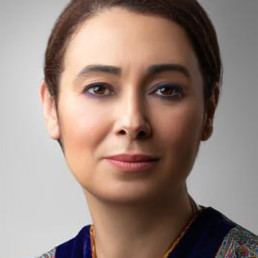
Written by Rachida Dahman
Rachida Dahman is an international educator, a language and literature teacher, and an educational innovator. She started her career in Germany as a teacher trainer advocating the importance of relationships above academics. She then moved to Luxembourg where she teaches German language and literature classes to middle and high school students. She is an award-winning poet, co-author of the best-selling book, ATLAS DER ENTSCHEIDER Entscheiden wie die Profis- Dynamik, Komplexität und Stress meistern.
School hallways are noisy. So much simmers in those corridors during breaks, and even more seems to ferment in teachers’ lounges, in the spaces of our schools as a whole. One might call it a festival of unresolved relationships, one that struggles to keep pace with the relentless pressure of coexistence, confrontation, and interdependence. By the end of a school day, we often stand slightly hunched, worn out, with restless legs that refuse to find stillness.
Amid this disorder, schools often become arenas of fear, environments where anxieties are not merely tolerated but systematically nurtured. These fears dance unseen and unchecked while the guardians of order, the teachers and educational institutions stand by as mere spectators. But what if this breeding ground of fear is not simply the result of carelessness or overwhelm, but rather the consequence of constant monitoring, control, and evaluation?
In my own school days, things were not so different. Students were expected to know little, challenge nothing, provoke no one, and certainly not disrupt. Teachers, on the other hand, constantly provoked, carried their small scandals into the school and sometimes even into the classroom. They unsettled us, and when we went home after school, we had little to report. Math, German, English, sports—subjects isolated from one another. Even the teachers lacked unity; how could the subjects possibly converse?
I remember a history teacher who filled gaps in knowledge with half-truths about controversial topics, as though he were a chronicler from another era. His stories brought the past to life, yet within the fog of his legends, the facts remained hidden. In math class, so-called wisdom from “great thinkers” was often reduced to hollow phrases—”Einstein probably said something like this.” These words sounded clever but were no more than glittering packages. In physics, correlation was sold as causation, “The moon and bad weather? That can’t be a coincidence!” Stereotypes were used so liberally that distinguishing between reality and fiction became a challenge.
In sports, fear was a constant companion. Our physical education teacher constructed scenarios of dread, “No training? That could lead to serious long-term damage!” The art teacher presented false dichotomies: “Either you draw like Van Gogh, or not at all.” Where were the nuances? Where was the space for creativity and individual thought? The music teacher, meanwhile, sought constant excuses to shield herself from constructive criticism: “It sounded fine, didn’t it? The acoustics were just bad.” The pursuit of excellence seemed replaced by a need for approval.
Parents observed this strange game, unfolding beyond grades and lesson plans, a struggle for “the best” for their children, though it was unclear what that even meant anymore. The best opportunities, the greatest potential, the most tailored support, concepts they discussed without ever fully grasping, haunted by the question of how much of their desires were genuine and how much were projections of societal expectations.
Children sensed what adults dared not articulate — that this was as much about demands as it was about support. What simmered here weighed on all of us, a pervasive burden whose origins no one could pinpoint but whose presence was undeniable.
This was a time when sports and music icons of the 1990s sparked cultural revolutions. With their bold hairstyles and extraordinary performances, they left powerful impressions that extended far beyond their fields. They influenced not only fashion and trends but also the values and norms of an entire generation, embodying success, individuality, and determination. Yet the school corridors simmered. A cacophony of invisible tensions echoed between the walls, while the daily routines left unspoken feelings like a tangled web between teachers, students, and parents.
Parents understand that children learn as much about social dynamics in school as they do about academic content. The lessons taught in classrooms are only a fraction of the school’s essence. It is the interpersonal relationships and encounters that leave lasting imprints, shaping self-worth. Sadly, this invisible yet essential layer often remains untouched and unformed. Students seem to be molded into compliant chess pieces in the game of knowledge dissemination. But what of their independence, their ability to express themselves, their courage to be authentic?
“Tell me how you speak to my child, and I will tell you who you are to them.” Language shapes our self-perception, and this is especially true in schools. The way a teacher speaks to students often reflects how they perceive their relationship with them. Are the words mere rhetorical phrases repeated out of habit, or is there genuine dialogue? Students are perceptive, quickly recognizing whether a teacher’s words make them feel valued or dismissed.
When communication is honest and direct, it creates a space where students can trust that their thoughts and feelings are welcome in school. Sadly, this is not always the case. Too often, we encounter linguistic “theater tricks,” half-truths, exaggerated dramatizations, or the subtle construction of false dichotomies, “Either you understand it, or you just don’t have what it takes.” Language, however, could serve a different purpose, reducing fear and building authentic connections.
The days of teachers as untouchable authorities, almost divine in stature, are over. This venerable role, where educators not only imparted knowledge but also moral judgments and ethical frameworks, has been increasingly supplanted by social media. Today, it is platforms and influencers, not teachers, that shape the values and norms of our students. Algorithms and digital streams dictate what is right and wrong, eroding the teacher’s role as a moral compass.
When I ask educators, “What do you think was truly happening then, and is it definitively different today?” I rarely receive a clear answer. Perhaps the point is no longer the answers but the questions themselves. Asking the right questions is a form of resistance in this era. Questions that inspire rather than inflame, that touch rather than coerce.
The fear of new technologies like artificial intelligence (AI) may be significant, but the greater threat lies in the erosion of human connections that should form the bedrock of education. True education requires profoundly personal and meaningful relationships, not just to address technological challenges but to renew and solidify the interpersonal foundations of teaching and learning.
Children are acutely sensitive to language. They are deeply aware of repetition, which is why rituals carry emotional weight. As adults, especially in classrooms, how we speak to them matters immensely. Every word, every gesture reflects what we hope for them and believe in them. Relationships cannot thrive in utter chaos; they falter when they cannot take root in fertile ground. We must create spaces where these relationships can flourish, enabling genuine connections and fostering a positive learning environment. It takes courage to step into these spaces of vulnerability and to cultivate an atmosphere where students not only learn but also experience what it means to be part of a community. Every child has the right to sovereignty over their feelings and their story, and these spaces should be defined by openness and respect.
The future of education lies in empowering these voices, breaking rigid structures, and rethinking what is possible. As educators, we must rise to the challenge of creating spaces of vulnerability where students can safely express their fears and hopes, fostering an environment where learning is not only possible but joyful. By engaging in true dialogue, we can transform the corridors of our schools from places of fear into spaces of growth and understanding.
Only then can schools become what they were meant to be, vibrant places of learning where every person, regardless of their background or history, has the opportunity to thrive and find their voice. In honoring children as autonomous beings with their own stories and inalienable emotions, we unlock the fundamental relationships that make learning meaningful and transform schools into places of deeper humanity.
Al-Anon and Alateen - for relatives and friends of alcoholics
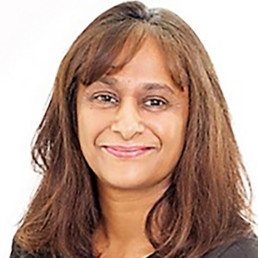
Written by Sonia Elmer-Soman
Sonia Elmer-Soman has a background in both law and education. She is a qualified law lecturer and has many years’ experience working as a legal practitioner in two prestigious law firms in the City and now within a reputable law firm local to her home town in Essex. She is also a qualified primary school teacher and is a guest writer for professional journals.
Most of us have heard of Alcoholics Anonymous (AA), but less well known about is Al-Anon and Alateen.
I met with Cheryl, a long-term member of Al-Anon, and she explains what Al-Anon and Alateen do, how they work and what impact they may have on the lives of members who are suffering from another’s problem drinking.
Q: What is the difference between AA, Al-Anon and Alateen?
A: Alcoholics Anonymous (AA) is a fellowship who come together from all walks of life and who share one common goal – to recover from alcoholism and achieve continued and sustained sobriety. Less well known about is Al-Anon (18+ adults) and Alateen (12-17 yr olds). Like AA, Al-Anon and Alateen are groups of men and women, of all faiths and walks of life, however this time with a focus on the person(s) affected by another’s alcoholism.
Q: Are there any entry requirements to joining Al-Anon and Alateen?
A: The only requirement is that you are suffering from the effects of another’s alcoholism.
Q: Are Al-Anon and Alateen a religious organisation?
A: No. Though “God” is referred to, it is a spiritual God, a higher power and everyone is free to define their own “higher power”. For some that may be a bird, a rose or the moon. For others it may be the group, prayer or meditation. For some the higher power may change over time.
Q: What does it cost to join?
A: Nothing. There are no fees associated with joining Al-Anon or Alateen. This is a non-profit organisation. Members are invited to make a donation towards room hire and/or literature at the end of the meeting. There is no requirement to contribute.
Q: Do the groups offer advice and/or counselling?
A: No. We are not trained therapists. “Let it begin with you” is an Al-Anon slogan which is the primary focus of the program. It suggests we shift the focus of our attention from the alcoholic in our lives to ourselves and begin living our own lives rather than interfering with theirs. The program offers a welcoming, friendly and confidential environment where group members understand in ways others cannot the difficulties we have experienced. We are free to speak of whatever is on our minds and we may share our experiences. Whilst the newcomer may need to offload a challenge or problem, most people find the focus naturally shifts away from the alcoholic and they start to gain insight into their own behaviour and how we may have contributed to our situation and how things may improve. We refrain from giving advice. There are many tools within the Al-Anon readings. Together we can find coping strategies to aid recovery of ourselves and to help us concentrate on our own wellbeing, behaviour, actions and reactions. Together we understand that we are powerless over alcoholism, that our lives have become unmanageable and we seek ways to assist our daily lives. We cannot control what the alcoholic does or does not do and we should not seek to change or control that which we cannot. Instead, we focus on the control we have over ourselves. We acknowledge that alcoholism is a disease and we develop understanding that, through our actions, we aid recovery of ourselves and, potentially, the alcoholic if we seek to change our own actions and feelings about the situation rather than focussing solely on the actions and feelings of the alcoholic.
Q: What do meetings typically involve?
A: A warm, friendly, non-judgemental welcome from a group of individuals who are going through or have gone through the same/or similar challenging journey as you. A cup of tea and a box of tissues are at the ready if needed. Each week a different topic is covered. This could be anything from ‘Resilience’ to ‘Hyper-vigilance’ to ‘Boundaries’ to name just three, but there are many more. We may do an inspirational reading for that topic and then offer up the table to anyone who would like to contribute either with a reading or with their thoughts or own personal experience which may or may not be related to the chosen topic. There may be shared experiences , but each member will have their own unique perspective. By keeping an open mind, you may hear something you can identify with, which may assist you to move forward. Newcomers often feel they have nothing helpful to share but often they provide golden nuggets that are incredibly beneficial to long-time members.
Q: Will the meetings help me and/or my family and the alcoholic?
A: We receive so much positive feedback. Al-Anon is about changing the actions and behaviours of ourselves rather than focussing on the alcoholic (as we have no control over the latter). Let it begin with us. These meetings might show us that ways in which we thought we were helping may have, in fact, negatively impacted potential recovery of ourselves and the alcoholic. In the absence of judgment, blame, guilt and shame, individuals feel free to openly discuss matters and often say they feel like a weight has been lifted when they leave the sessions.
Q: What is the minimum amount of sessions I should participate in?
A: It is completely up to the individual. We say it is best to go for at least six sessions, to learn how Al-Anon works and decide whether the program is for you. Sometimes it may not be the right time, but often people come back. There is no minimum or maximum term. Some individuals come for a few weeks, some dip in and dip out when convenient for themselves. Others have been attending for many years.
Q: Will what I say be treated in confidence?
A: Yes, anonymity is the foundation of Al-Anon. In order for everyone to feel safe, it is part of the ethos and ethics of the group that everything spoken about within the group stays in the group.
Q: What may be the benefits of joining Al-Anon and Alateen?
A: There is something hugely comforting in knowing that there are others, many others, out there who share the same challenging problems as you. Alcoholism is a family disease which affects the whole family. Young people attending Alateen meetings or adults attending Al-Anon in person or online, can see that they are not alone and that they did not cause the problem, neither are they responsible for their relative’s or friend’s drinking. Young people can benefit from sharing experiences with others of their own age and this often helps them understand their alcoholic relatives and recognise they are not to blame for the difficulties experienced with their home/families and could, in time, lessen the effects of having lived with alcoholism.
Q: Which one word would you use to describe Al-Anon and Alateen?
A: Insightful.
▪▪▪▪▪▪▪▪
Poor mental health and resulting drug or alcohol addiction spans generations and boundaries of socio-economic and cultural backgrounds. It is not a life-style choice. It is a disease which affects the whole family, relatives and friends.
For too many families in the UK, there remains a stigma associated with mental health and addiction issues. Guilt, shame, embarrassment and denial prevent sufferers and their families from seeking early intervention. All too often, without support, sufferers and their loved ones hide in plain sight and battle illness behind closed doors which leads to isolation, depression, anxiety and desperation.
Speaking with Cheryl and seeing first-hand the wonderful support offered to families and friends of alcoholics is heart-warming and fundamentally essential to the wellbeing of those affected.
Wherever possible, it is crucial that institutions such as the NHS, Education, Social Services, Addiction Services and the Criminal Justice System signpost this free service, so that families and friends of alcoholics can, if they so choose, access this vital service. The hope is that their voices are heard and their lived daily reality is understood. No longer should families and friends be isolated behind closed doors and remain the silent witnesses to addiction.
What one word would I use to sum up these groups? Empowerment.
Diversifying English Literature texts: Five ways to get your schools to invest
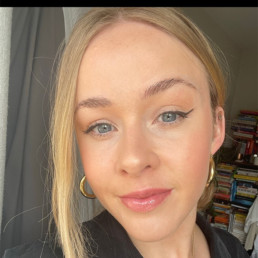
Written by Jessica Tacon
Jessica Tacon is second in charge of the English Department at City of London Academy Highgate Hill and is a member of NATE’s (National Association for the Teaching of English) ‘Reviewing Literature’ working group. She created The Right Writing campaign which aims to improve racial diversity in English Education.
The title of this piece reflects an ongoing challenge in education, but also an opportunity. While many schools and educators have made strides in diversifying their English curricula, there’s always room for progress. Students across the country deserve to see themselves reflected in the texts they study, while also being exposed to a wide range of perspectives. Diverse literature enriches learning experiences, fosters empathy, and ensures every student feels valued.
Here’s a brief overview of why a diverse and inclusive curriculum is essential:
- Representation matters: Research by Penguin Random House revealed that many students never study a text by a writer of colour, apart from a few poems in their GCSE studies. They also found that only 7% of students study a text by a woman, and just 0.1% study a text by a woman of colour. Every child deserves to see their experiences and identities reflected in what they read. Not only does this enhance engagement and enjoyment, but it can also lead to better academic outcomes.
- Retention in English Studies: When students don’t see themselves or diverse perspectives in their English lessons, they may perceive the subject as irrelevant. This may lead to a drop in the number of students pursuing English at A-level, which in turn impacts representation in higher education and English-related fields. A diverse curriculum can break this cycle by making the subject more relatable and meaningful.
- Broadening horizons: While representation is crucial, it’s equally important to introduce students to experiences, cultures, and voices beyond their own. Literature has always been a bridge to other worlds, offering insights into lives that differ from our own. This is a fundamental aspect of fostering curiosity and empathy in young people.
- Addressing historical imbalances: Historically, the English curriculum has often overlooked diverse voices. As educators, we have the opportunity (and responsibility) to address these imbalances and create and embed a curriculum that is inclusive, honest, and representative of a wide range of experiences.
Despite these clear benefits, the teaching of a diverse and inclusive range of literature texts isn’t yet the norm in all schools.
Support (and essential investment) is needed from senior leads in schools, and multi-academy trusts, to make this a reality. It is challenging as individuals may not be English specialists, but the points above highlight how a change in English can have a far-reaching impact on young people.
With this in mind, I would like to explore the common barriers to change and five solution-focused strategies to help schools embrace a more inclusive curriculum.
Strategies
Strategy 1: Emphasise the positive impact on students
Barrier: Leadership may focus on the potential challenges rather than the benefits of inclusivity.
Solution: Highlight the research-backed benefits of a diverse curriculum. For instance, the research by Penguin Random House shows students are more engaged when they see themselves reflected in their studies, and they perform better academically. Explain how inclusive texts also broaden students’ horizons, fostering empathy and critical thinking by exposing them to new perspectives and cultures. Frame change as being much less of a risk than continuing to teach a set of texts which actually may be disengaging students in the English classroom.
Message for leadership: A diverse curriculum creates a more engaged and motivated student body, which translates to higher achievement and a stronger school culture.
Strategy 2: Frame diversity as a shared responsibility
Barrier: Leaders may feel diversity initiatives are an additional challenge in an already complex system.
Solution: Present inclusivity as a professional and moral responsibility to address historical imbalances in education. Position the school as a leader in creating a curriculum that prepares students for life in a diverse and interconnected world.
Message for leadership: Diversity isn’t just a ‘nice-to-have’; it’s essential for fostering a fair and well-rounded education. Implementing an inclusive curriculum aligns with the school’s duty to provide all students with an equitable experience.
Strategy 3: Offer practical solutions to time and workload challenges
Barrier: Leaders may worry that introducing new texts will increase workload for already overstretched staff.
Solution: Reassure them that high-quality, ready-to-use resources are available. Platforms like BBC Bitesize offer support materials on a range of texts including some recently added to diversify exam board text options, such as My Name is Leon and Leave Taking. BBC Bitesize, as its name suggests, is a great jump-off point for exploring a diverse range of texts by breaking them down into manageable chunks.
Message for leadership: Implementing an inclusive curriculum doesn’t need to add extra strain. Leverage existing resources and expert support to streamline the process.
Strategy 4: Address staff confidence with professional development
Barrier: Some educators may feel unprepared to teach unfamiliar texts or discuss sensitive topics.
Solution: Advocate for investment in professional development such as training sessions or workshops that help staff gain confidence in teaching diverse texts. Highlight that introducing new material can be professionally invigorating, offering opportunities for growth and fresh perspectives. For instance, one text added to AQA’s English Literature GCSE as part of their diversity drive is Princess and the Hustler by Chinonyerem Odimba. It’s a modern, engaging text that explores rich themes, literary techniques, and historical context, making it a rewarding teaching (and learning) experience.
Message for leadership: Building staff confidence through professional development ensures successful implementation while reinvigorating teaching practices.
Strategy 5: Present change as achievable and incremental
Barrier: Leaders may see curriculum reform as an overwhelming, all-or-nothing process.
Solution: If this is the case, advocate for a phased approach, starting with small but meaningful changes (such as introducing one or two new texts). You could suggest piloting new texts with specific classes before scaling up.
Message for leadership: Curriculum change doesn’t need to happen all at once. An incremental approach makes the process manageable while demonstrating the positive impact of inclusive texts.
Looking ahead
It’s important to acknowledge that change in education is rarely quick or easy. However, the potential benefits far outweigh the challenges. A truly diverse and inclusive curriculum not only enriches students’ academic experiences but also prepares them to navigate an increasingly interconnected world.
Of course, diversifying texts is just one part of creating an inclusive school environment. Staff training, teaching approaches, and the broader school culture all play critical roles in ensuring that diversity is embedded meaningfully and authentically.
Every student deserves an education that values their identity and broadens their horizons. As we move forward, let’s commit to making this vision a reality.
To access the BBC Bitesize GCSE English Literature collection, please visit: https://rebrand.ly/7d51da
Ramadhan in Schools: building welcoming and inclusive spaces

Written by Maslaha
Maslaha works to change and challenge the conditions that create inequalities for Muslim and Black and brown communities in education, criminal justice, health and on the basis of gender, in a continued climate of Islamophobia, racism and negative media coverage.
For many Muslims, Ramadhan is a time of joy, community and to recharge spiritually. Yet whether it’s choosing to pray at lunchtime or wear a hijab during these days, visible expressions of faith are often met with hostility – expressions of ‘Muslimness’ are treated as a threat. In this way, Ramadhan exposes the Islamophobia that persists throughout the rest of the year.
As educators, we know that when young people feel safe bringing their whole selves to a space, it directly impacts their self-esteem, confidence and sense of belonging. This psychological safety affects not only wellbeing, it directly influences students’ engagement, attainment, and overall success in school.
Young people and families have shared how Islamophobia in schools and policies like The Prevent Duty have left them feeling isolated and led them to self-censor out of fear of judgement or even punishment.
We asked young people and their families what they would like their teachers to know, or do during Ramadhan. We put together what they said into this resource, and share five practical ways to create safe and inclusive spaces for students who choose to observe it: Ramadhan in schools
For more resources to support you build your anti-racist classroom, deliver a culturally-relevant curriculum and nurture safe spaces for all young people, see Education | Maslaha

